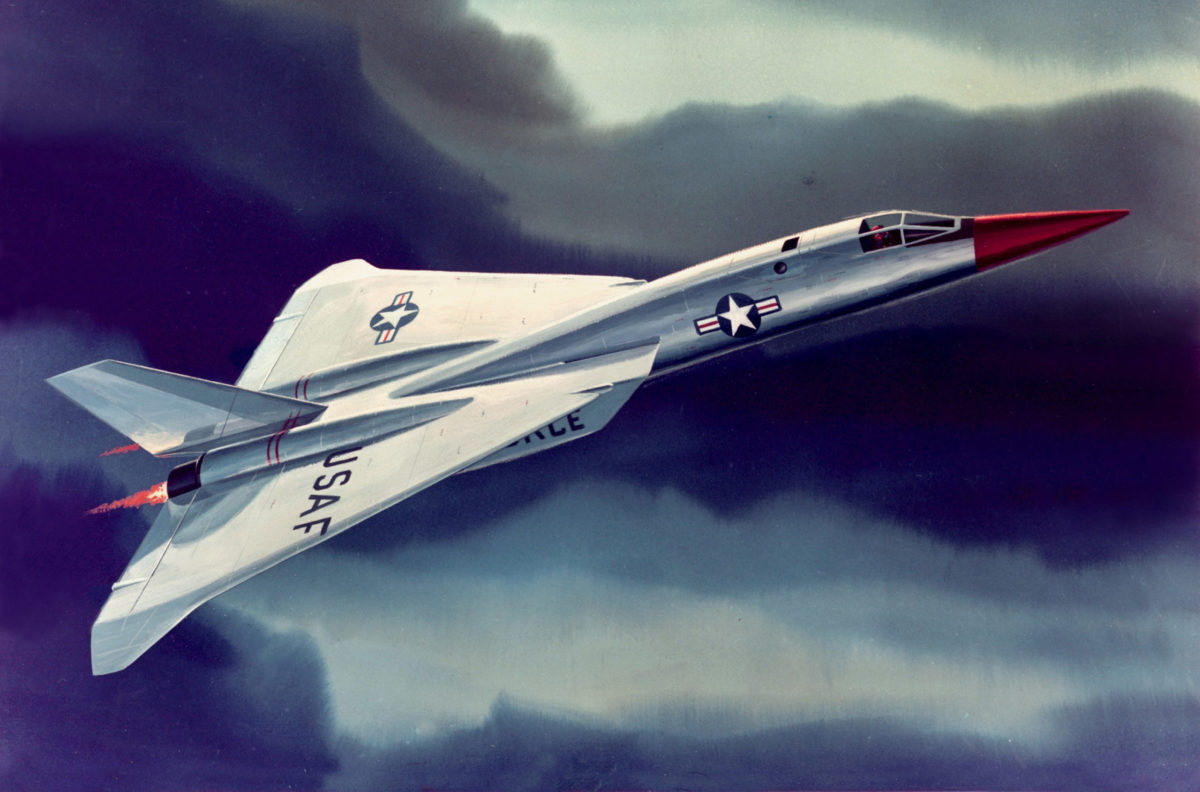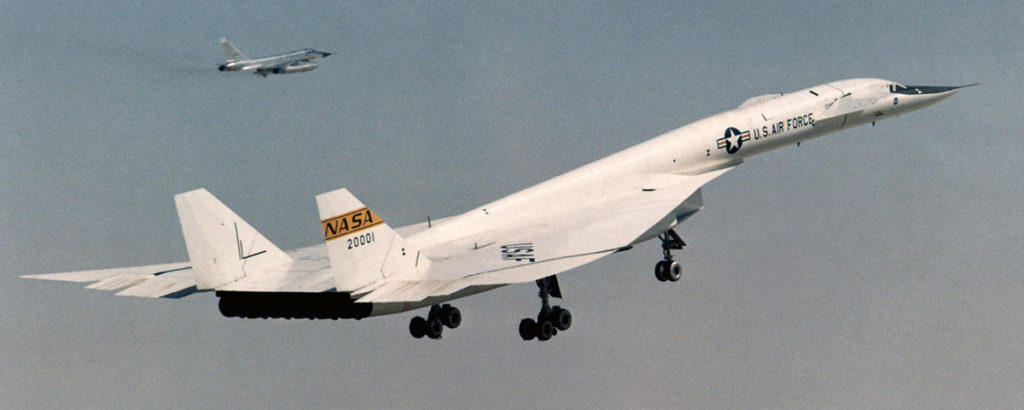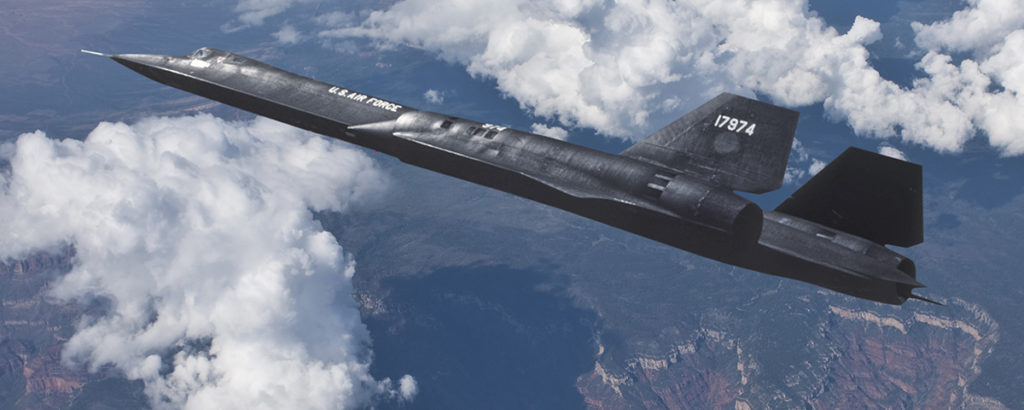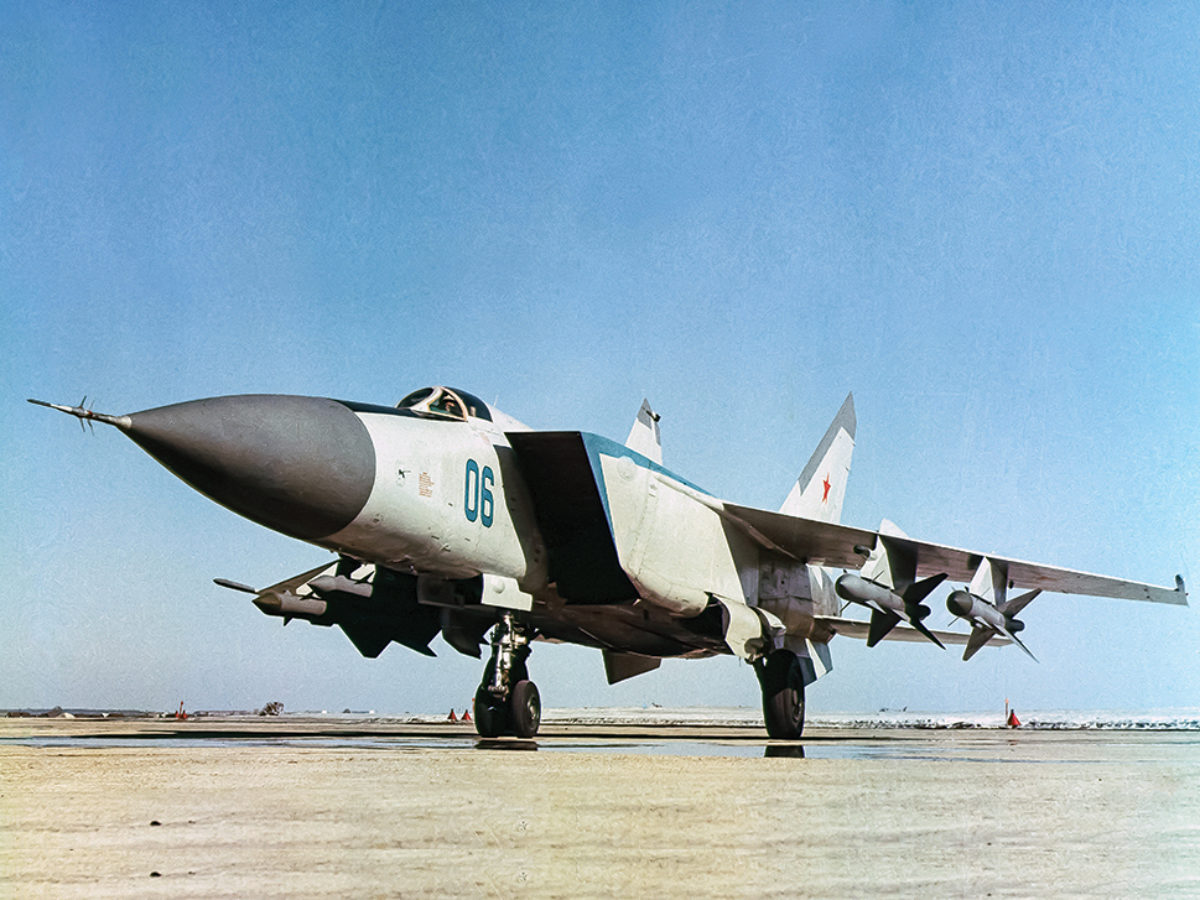It is 1955, and Armageddon is about to begin: The Distant Early Warning (DEW) Line has just detected scores of Soviet bombers heading toward the North Pole. The courses the bombers are projected to take will eventually lead to targets within the continental borders of the United States. Each one is carrying a thermonuclear payload with enough destructive power to reduce any large city to radioactive cinders. The United States’ first line of defense—fighter-interceptors belonging to the U.S. Air Force’s Air Defense Command (ADC)—has been alerted and scrambled. It’s absolutely imperative that these planes detect, intercept and destroy the enemy bombers before they reach U.S. territory—before they have the opportunity to release their deadly loads. In order to get there in time, the ADC’s fighter-interceptors have to be very fast, but speed itself isn’t a solution—they must also be able to identify their targets without delay, get into position and inflict a killing blow. The weapons cannot miss; they must destroy their targets.
That scenario may seem far-fetched in today’s political climate, but in 1955 it was very real. The May Day flyovers of the Kremlin in 1954 and 1955 confirmed that the Soviet Union possessed three types of advanced bombers with intercontinental range: jet-powered Tupelov Tu-16 Badgers and Myasishchev Mya-4 Bisons, plus turbo-prop-powered Tu-20 Bears. More ominous, contemporary intelligence data strongly suggested that the Soviets were hard at work on a delta-wing supersonic bomber. American leaders were especially concerned because in 1955 the ADC did not possess any operational aircraft with supersonic performance. And its most important supersonic interceptor project—the Convair F-102A—was not only two years behind schedule but also had a top speed of only Mach 1.22 (700 mph at 53,000 feet), too slow to counter the long-term Soviet threat.
It was this state of affairs that led the U.S. Air Force in October 1955 to issue a general operating requirement (GOR) for what became, in all probability, the most technologically ambitious fighter-interceptor program of the 1945-60 era. GOR 114, under the project name LRIX (long-range interceptor, experimental), called for a two-place, all-weather interceptor capable of sustained velocities of Mach 3 (1,977 mph), an operational ceiling in excess of 75,000 feet and sufficient range to loiter around an interception point for approximately one hour.
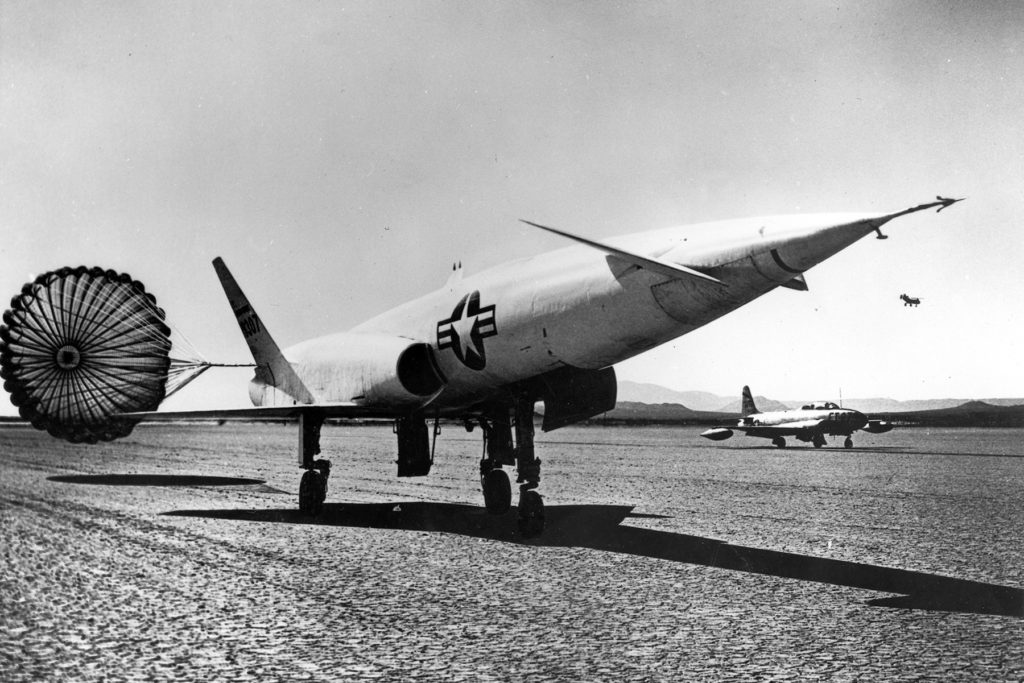
After the GOR was issued, the Air Force did not follow the traditional methods of contractor selection for LRIX. The normal process of evaluating competitive proposals on a project of this complexity from more than one aircraft manufacturer was judged to take too long and would have unacceptably extended the development period on the new airplane. In a letter contract dated June 6, 1957, the Air Force named North American Aviation as the prime airframe contractor and simultaneously selected six other companies as subcontractors to develop LRIX’s vital systems and components: Hughes Aircraft, the fire-control system and missile armament; Convair Aircraft, the wing assemblies; Marquardt Aircraft, the air induction control system; Hamilton Standard, the air conditioning and pressurization; International Telephone & Telegraph, the mission and traffic control system; and Electronic Specialty, the antenna system.
North American’s design proposal for the LRIX airframe was listed as company Model NA-257 and subsequently received the Air Force designation XF-108A. The original aerodynamic concept for LRIX was derived from North American’s 1953 unmanned X-10 test vehicle. The X-10 was originally built as a proof-of-concept testbed for the delta-canard configuration that would be used on the company’s ramjet- powered XB-64 (later redesignated XSM-56 Navaho) intercontinental cruise missile. Of even greater importance was the XF-108’s systemic and aerodynamic relationship to North American’s sister project, the XB-70A Mach 3 bomber.
As a secondary mission, the F-108 was to serve as an escort for the B-70, inasmuch as it would be the only fighter that could keep up with the new bomber. The two aircraft would be developed side by side, sharing structural characteristics and subsystems and using General Electric X-279E (J93-3AR) turbojets, each of which was expected to produce 30,000 pounds of thrust in full afterburner. Both would feature a state-of-the-art emergency escape system that provided crew members with pressurized, self-contained capsules capable of sustaining ejections anywhere between zero and 80,000 feet. All three North American programs—XSM-56, XF-108A and XB-70A— were being designed to an “all-supersonic flight pattern,” that is, the cruise, weapons delivery and return (with the exception of the XSM-56) phases of the mission would be maintained at supersonic speed, as opposed to the earlier “split mission pattern,” involving a subsonic cruise, a supersonic dash over the target and then a subsonic return.
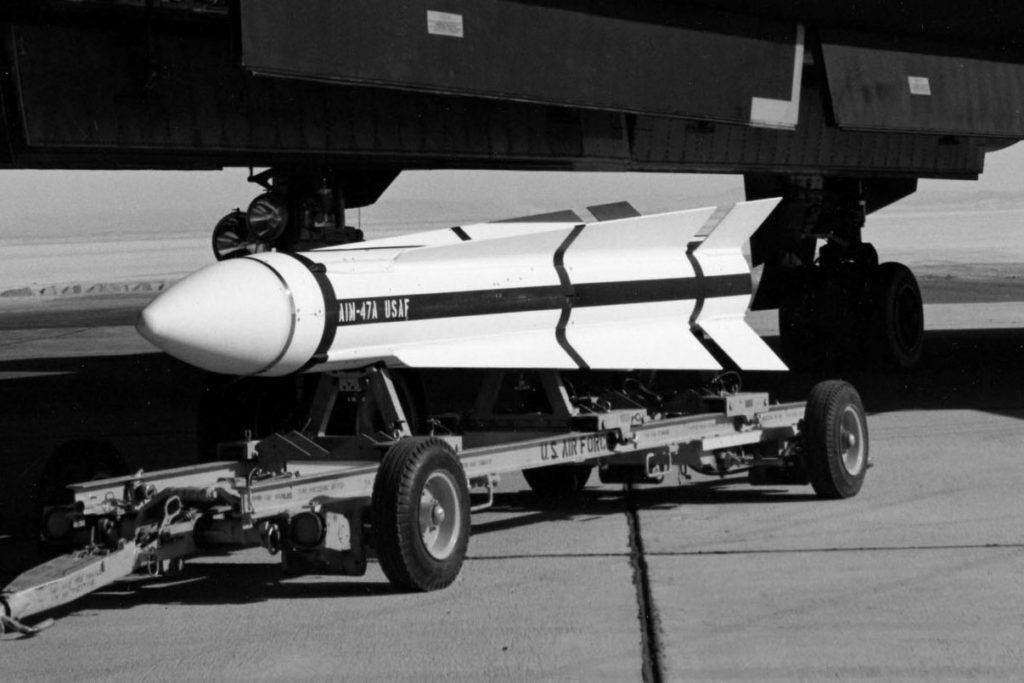
Although the XF-108A was to share the general delta planform of the XB-70A, surviving drawings and artist’s impressions indicate that certain details in aerodynamic configuration were changed during the design study phase. Reference material doesn’t provide a clear chronology, but the original form of the XF-108A was apparently very similar to the bomber’s layout: canards on the upper fuselage forward of the wings and a shoulder-mounted delta wing with 60-degree leading edge sweep from root to tip. Instead of the variable-droop wingtips that appeared on the XB-70A, the initial design of the XF-108A featured fixed trailing-edge finlets located at about 60 percent span.
The XF-108A was the largest American fighter design ever conceived up to that time (e.g., double the weight of the contemporaneous McDonnell F4H/F-4 being developed for the Navy and Marine Corps). Its general dimensions and specifications were a length of 82 feet 2 inches, a wingspan of 57 feet 5 inches, a wing area of 1,865 square feet and a maximum takeoff weight of 102,533 pounds. The aircraft’s two General Electric J93-GE3-AR engines were to have been mounted in fuselage bays slung under the wings, extending from the leading edges to the tail and fed air by large, boxy, ramp-type variable inlets. Available references provide no definitive information about structures and materials that would have been used for the XF-108A, but they undoubtedly would have been the same type of titanium skinning and framing and PH15-7Mo stainless steel honeycomb panels developed for construction of the XB-70A. The manufacturer’s estimated performance for the XF-108A was a maximum speed of 1,980 mph (Mach 3), a service ceiling of 80,100 feet and a combat radius of 1,020 miles fully loaded.
The Need for Speed
Like the XB-70A, the XF-108A was to have been a veritable flying fuel tank, holding 7,100 gallons of fuel that constituted 42 percent of its takeoff weight. Hughes was developing the Mach 6 GAR-9 Falcon missile (later renamed the AIM-47A) especially for the LRIX project. The new radar and infrared-guided missile would have a range of over 100 miles and could be armed with a low-yield nuclear warhead. To go with the GAR-9, Hughes was also developing the advanced AN/ASG-18 radar and fire-control system, which would have enabled the XF-108A to lock on to targets and launch its nuclear missiles from standoff distances.
The typical mission profile predicted from the aircraft was impressive: a 1,150- mile cruise at Mach 2 plus three minutes of combat at Mach 3; or a 400-mile cruise at Mach 3 plus 10 minutes of combat at Mach 3; or a supersonic cruise to a specified area (distance not specified) with range to loiter for one hour plus intercept any target acquired at Mach 3. With the ability to get into position, acquire the target and engage at range with guided, nuclear-tipped weapons, the new interceptor would have spelled almost certain doom to any hostile bomber attempting to enter American airspace from the North Pole.
The U.S. Air Force expected the F-108A to make it first flight in early 1961 and begin entering operational service by early 1963. During a production run expected to last well into the 1960s, the Air Force had planned to acquire at least 480 F-108s as replacements for its existing ADC fleet of F-102As, F-101Bs and F-106As. The final aerodynamic configuration of the XF-108 is not entirely clear, but mock-up photos suggest that the canards were deleted, the finlets were replaced by ventral fins, the wing leading edges were cranked to about 45 degrees sweep at 60 percent span, and the wingtips were given a fixed droop. A mockup inspection completed by Air Force officials in January 1959 indicated that very few changes would be required, and in May 1959 the aircraft was officially named the Rapier.
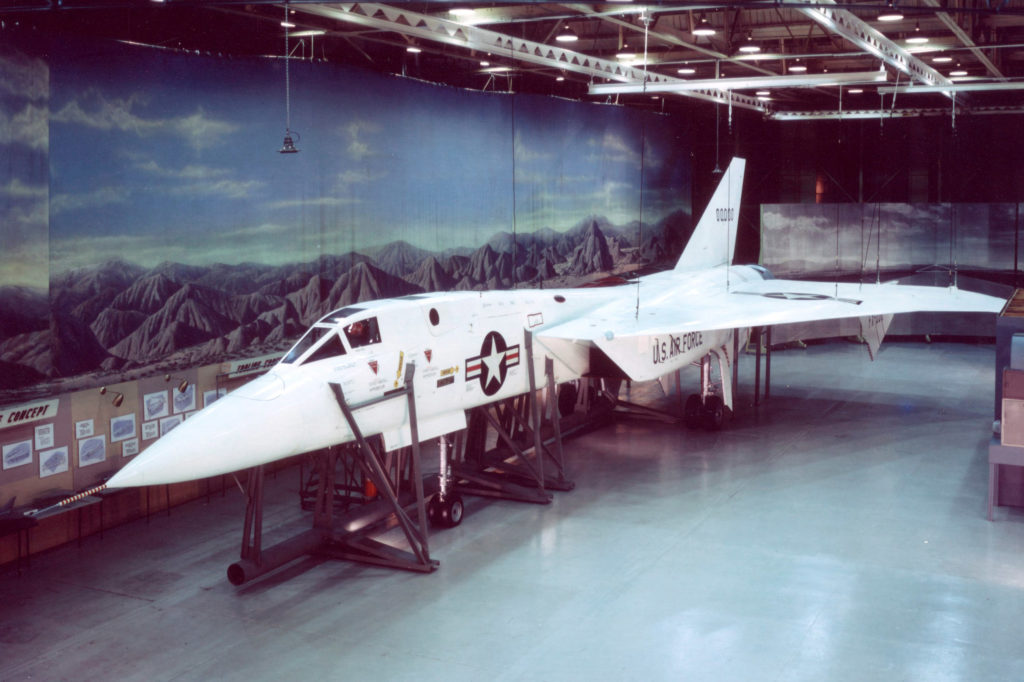
But only three months later, the sky fell in. Despite their potential, the XF-108A and the XB-70A had become subjects of a technological and doctrinal debate within the Air Force (and the entire defense establishment) over an entirely new type of weapon—the intercontinental ballistic missile. The ICBM had recently emerged as a reliable nuclear payload delivery system, and because of that pro-missile advocates claimed that high-altitude Mach 3 bombers and interceptors were already obsolete. ICBMs, they argued, were cheaper, faster and more accurate than Mach 3 planes, and only more American ICBMs could form the basis of a viable defense against Soviet ICBMs (i.e., mutual assured destruction). In September 1959, with total research and development expenditures standing at $141.9 million, the XF-108A was canceled, and just three months later the XB-70A was canceled as a strategic bomber program and reduced to development of the one experimental prototype then under construction.
Although the Rapier died as an airframe project, much of its technology lived on in other forms. North American’s highly innovative A3J (A-5/RA-5) Vigilante Navy attack and reconnaissance aircraft shared many of the XF-108’s aerodynamic and structural features, and the sophisticated Hughes ASG-18 fire-control system and its AIM-47A missiles were subsequently incorporated into Lockheed’s exotic fighter derivative of the SR-71 Blackbird, the YF-12A, which flew in 1965 but never achieved production. The technology gained by Hughes with the ASG-18/AIM-45A eventually metamorphosed into the Navy AIM-54A Phoenix missile system used on the Grumman F-14 Tomcat.
Finally, in 1958-59, the Soviet Union’s apprehension over the XB-70 and XF-108 led directly to development of the Mikoyan-Gurevich MiG Ye-266, which flew for the first time in 1964, and after a long period of development entered service in 1971 as the MiG-25 Foxbat. Although Foxbats turned out to be Mach 2.8 aircraft, they had a highspeed combat radius of only 249 miles and very limited standoff capability—no comparison to the XF-108, had it flown.

